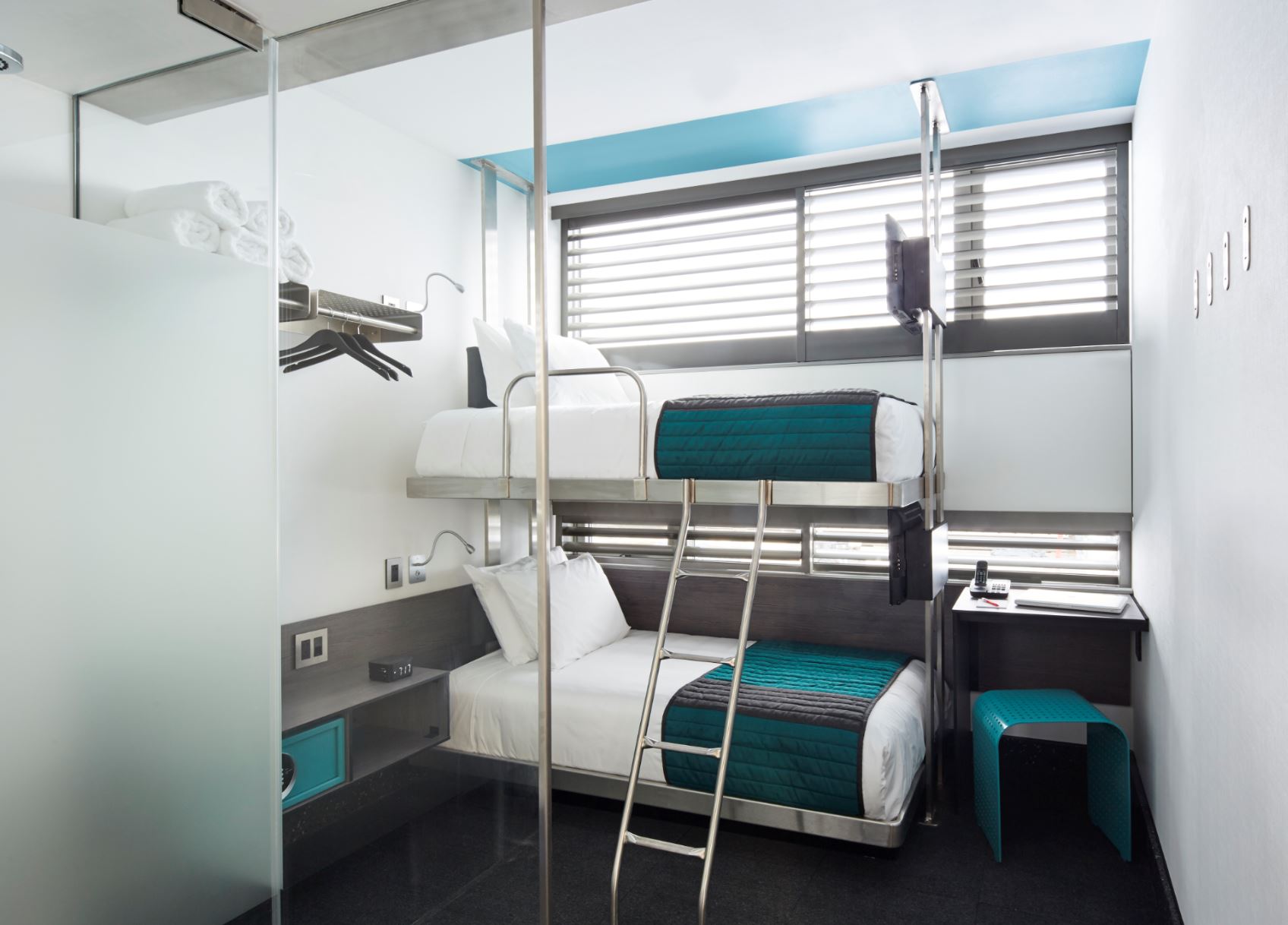A new 210-room hotel is going up in Manhattan’s Lower East Side, which is not unusual, but its construction is anything but ordinary. The majority of the CitizenM hotel at 185 Bowery is being constructed off site, in Chojnice, Poland, to be precise, and will be transported by ship to New York. Upon arrival, it will be pieced together like a Lego set in modular blocks, with all furniture, fixtures and equipment already in place.
According to John Hardy, president and CEO of the John Hardy Group, the firm managing the construction of the CitizenM, this modular construction method was chosen because it is perfect for midscale hotels and below that consist of 300 rooms or less that all have the same size and dimensions. This is because the rooms are fabricated in advance according to strict requirements before get-ting the assembly-line treatment, showing up to the property ready to be pieced together. Hardy said this helps save on costs, avoids delays associated with weather and helps operators cut to the opening as quickly as possible. Because the property is located close to New York’s harbor, transportation is not an issue either, and CitizenM has tailored much of the hotel’s design around modular development in response.
“By doing smaller rooms they spend less on the product initially, but they reinvest in higher-quality FF&E and finishes,” Hardy said. “People care more about those than room size, especially in Manhattan.”
The CitizenM is not the first modular build to come to New York City, and it won’t be the last. Nearby in Brooklyn a new Pod hotel is in the process of going up. Pod is the product of BD Hotels, which is owned by hoteliers Richard Born and Ira Drukier, and rooms for the company’s newest hotel in the Williamsburg neighborhood are coming from Gdansk, Po-land. Rooms at the Pod range from 110 to 120 square feet, and the modules being shipped to Brooklyn will consist of two rooms and a section of the corridor in between them, allowing them to be pieced together like a jigsaw. In just under two years of total construction time, all 249 guestrooms will be open for business, fast for a Manhattan project that met delays.
“I do believe under normal circumstances you can build a modular building six months quicker and cheaper than a traditional build,” Born said. “It takes a lot of the risk away from development and helps the deal get done.”

ACCURACY NECESSARY
Modular construction isn’t liability free. According to Born, “if you make one mistake, you’ve made 249 of them.” This means developers need to pore over building plans with the finest of combs, because once the approval process is over it’s off to the races. Danny Patel, COO of construction finance for NewcrestImage, said that often interest in modular development stems from its rapid construction pace, but once developers do their research they are more interested in the quality of the product’s finish and how development is handled in a controlled environment.
“Developers can look at all aspects of a room from the inside out, and everything can be inspected before rooms are shipped to the site,” Patel said. “That is the ultimate benefit for many—the level of quality control.”
As far as financing projects like these, opinions are divided on the level of difficulty encountered when seeking a modular build. Though modular construction is nothing new for real estate and apartment development, it’s in the midst of a renaissance for hotels and, according to Patel, some lenders who are most familiar with hospitality may need some education before jumping on board.
“Because modular builds are made in a factory, they are heavy on initial cash support,” Patel said. “You fund the majority of the project early on. You take on a lot of risk… and lenders aren’t always aware of their lien rights as the property is being built in a factory and technically it isn’t your property until it’s on site.”

TRICKS OF THE TRADE
Hardy said financing is not nearly as complicated as learning both conventional and modular design and construction at the same time, which must be done because a modular hotel’s lobby and public areas still must be built in a traditional manner.
“You have to do the rest of the project conventionally, and if you do everything right and your manufacturer messes up it can backfire on you if you aren’t careful,” Hardy said. “The planning process is also difficult, since it takes forever to get a design finished.”
According to Born, it’s most important to figure out if modular is the proper avenue for your hotel before you embark on the process because there are so few skilled and well-positioned companies that offer the service.
“It’s more adaptive to certain brands, very high-end brands less so,” Born said. “It’s perfect for Pod, which is going for a little higher level design and technology at a modest price.”
